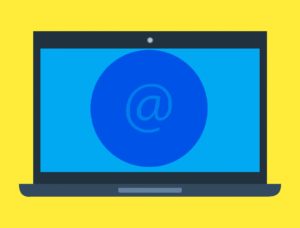 Whether it’s opening an attachment infected by a virus, or a phishing scam where you unknowingly give up your login to a critical web site, e-mail still remains the most popular and reliable way digital thieves can rob you blind, steal your identity and wreak havoc on your network. Worst of all? You’re inviting them in! While there are a number of things you need to do to protect yourself, here are five pieces of information you (and your team) should never put in an e-mail.
Whether it’s opening an attachment infected by a virus, or a phishing scam where you unknowingly give up your login to a critical web site, e-mail still remains the most popular and reliable way digital thieves can rob you blind, steal your identity and wreak havoc on your network. Worst of all? You’re inviting them in! While there are a number of things you need to do to protect yourself, here are five pieces of information you (and your team) should never put in an e-mail.
1. Your social security number. Think of this as your “bank account” number with the government. You should never e-mail this to anyone because it can be used to open credit cards and steal your identity.
2. Banking information. Your bank account numbers, routing number and online banking login credentials should never be e-mailed. Further, avoid sending a voided, blank check as an attachment to an e-mail.
3. Your credit and/or debit card information. Never update a credit card via an e-mail! If you need to update a card with a vendor, there are only two safe ways to do this. The first is to log in to your vendor’s secured site by going to the URL and logging in. Do not click on a link in an e-mail to go to any website to update your account password or credit card! Hackers are known for creating very legit-looking e-mails designed to fool you into logging in to a well-crafted spoof site, which looks very similar to a trusted website. From there, you’ll be prompted to enter your username, password and other financial details, thereby gaining access. Another way to update your account is to simply call the vendor direct and updating information over the phone.
4. Login credentials and passwords. You should never share your passwords or answers to security questions with anyone for any site, period. Password management is key and solutions are available. If you have not already, ask us about Passportal.
5. Financial documents. An attachment that includes any of the above is just as dangerous to e-mail as typing it in. Never e-mail any type of financial documents (or scans of documents) to your CPA, financial planners, bank, etc.
Remember: Banks, credit card companies and the government will never ask you to click a link to provide them with any of the five items above. If you get an e-mail requesting you to update any of the above information, there’s a good chance it’s a phishing e-mail from a hacker. Don’t be fooled!
Check Out Our Security Tip To Learn More!
Not Sure If Your Network is Safe?
Fill Out The Form To The Right To Request A Network Assessment.
Visit NCINDD.com for more details.
